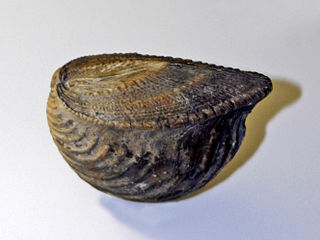
Lepidoptera is an order of insects that includes butterflies and moths. About 180,000 species of the Lepidoptera are described, in 126 families and 46 superfamilies, 10 percent of the total described species of living organisms. It is one of the most widespread and widely recognizable insect orders in the world. The Lepidoptera show many variations of the basic body structure that have evolved to gain advantages in lifestyle and distribution. Recent estimates suggest the order may have more species than earlier thought, and is among the four most speciose orders, along with the Hymenoptera, Diptera, and Coleoptera.
Sir George Francis Hampson, 10th Baronet was an English entomologist.

Arthur Gardiner Butler F.L.S., F.Z.S. was an English entomologist, arachnologist and ornithologist. He worked at the British Museum on the taxonomy of birds, insects, and spiders.

Coleophora is a very large genus of moths of the family Coleophoridae. It contains some 1,350 described species. The genus is represented on all continents, but the majority are found in the Nearctic and Palaearctic regions. Many authors have tried splitting the genus into numerous smaller ones, but most of these have not become widely accepted.

The Arctiini are a tribe of tiger moths in the family Erebidae.

The Ethmiinae are a subfamily of small moths in the superfamily Gelechioidea sometimes included in the Elachistidae or the Oecophoridae, but mostly in the Depressariidae as a subfamily Ethmiinae.

Eupterotidae is a family of insects in the order Lepidoptera with more than 300 described species.

Urodidae or "false burnet moths" is a family of moths in the lepidopteran order. It is the type genus in the superfamily, Urodoidea, with three genera, one of which, Wockia, occurs in Europe.
Agathiphaga is a genus of moths, known as kauri moths. It is the only living in the family Agathiphagidae. This caddisfly-like lineage of primitive moths was first reported by Lionel Jack Dumbleton in 1952, as a new genus of Micropterigidae.

Eriogaster is a genus of moths in the family Lasiocampidae first described by Ernst Friedrich Germar in 1810.

The Thyatirinae, or false owlet moths, are a subfamily of the moth family Drepanidae with about 200 species described. Until recently, most classifications treated this group as a separate family called Thyatiridae.
Agrioceros is a genus of moths in the family Depressariidae.

Trigonia is an extinct genus of saltwater clams, fossil marine bivalve mollusk in the family Trigoniidae. The fossil range of the genus spans the Paleozoic, Mesozoic and Paleocene of the Cenozoic, from 298 to 56 Ma.
Agrioceros hypomelas is a moth in the family Depressariidae. It was described by Alexey Diakonoff in 1966. It is found on Sulawesi.
Agrioceros subnota is a moth in the family Depressariidae. It was described by Alexey Diakonoff in 1966. It is found on Java.
Agrioceros magnificella is a moth in the family Depressariidae. It was described by Sauber in 1902. It is found in the Philippines.
Agrioceros platycypha is a moth in the family Depressariidae. It was described by Edward Meyrick in 1928. It is found in the Philippines.
Agrioceros zelaea is a moth in the family Depressariidae. It was described by Edward Meyrick in 1906. It is found in Sri Lanka.
Eugene Gordon Munroe was a Canadian entomologist who discovered numerous species of insects. He worked for the Insect Systematics and Biological Control Unit, Entomology Division in Ottawa, Canada.
Estratos de Pupunahue is the name given to the sedimentary strata of Oligocene-Miocene age that crop out in Pupunahue and Mulpún near Valdivia, Chile. Outside this locality Estratos de Pupunahue extends below the surface over a larger area. The thickness of the strata varies from a few meters to 530 meters. The strata were initially described by Henning Illies. The strata are made up of conglomerate, sandstone and mudstone. The clast of the conglomerates are made up of metamorphic rock and the disposition of the conglomerates varies from clast-supported to matrix-supported. The sandstone and mudstone contain layers of lignite coal that exceed 30 cm in thickness.









